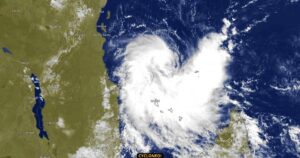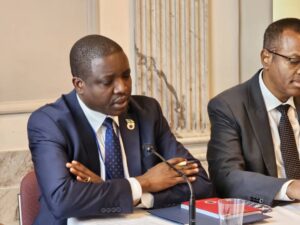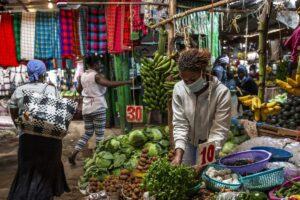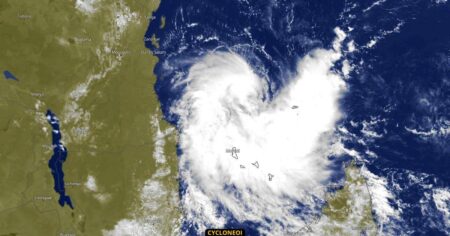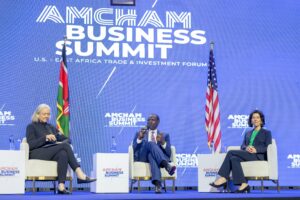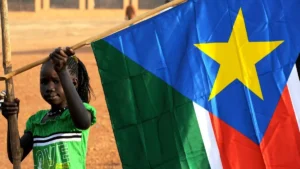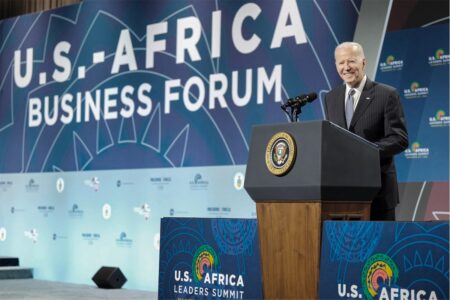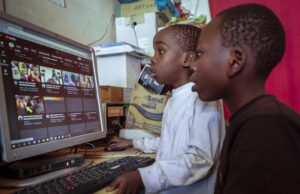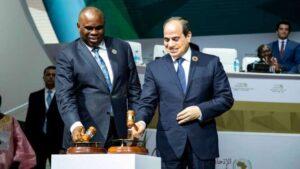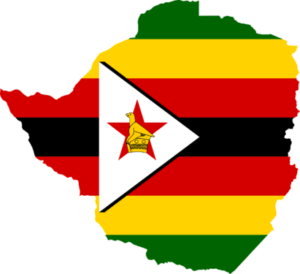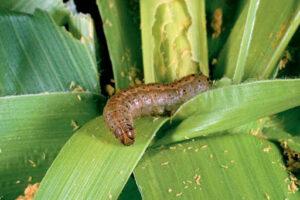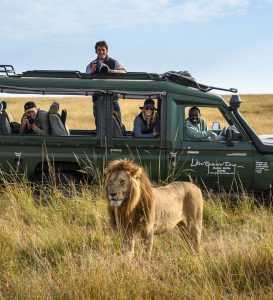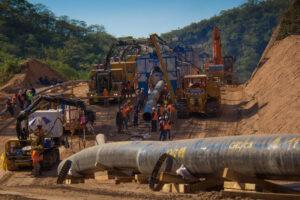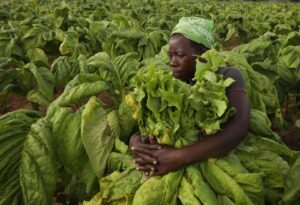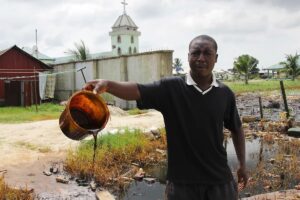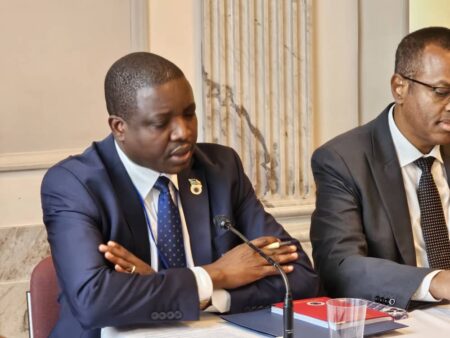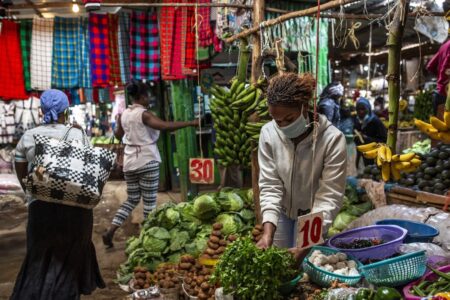- Kenya, Tanzania braces for torrential floods as Cyclone Hidaya approaches
- EAC monetary affairs committee to discuss single currency progress in Juba talks
- Transport and food prices drive down Kenya’s inflation to 5% in April
- Payment for ransomware attacks increase by 500 per cent in one year
- History beckons as push for Kenya’s President Ruto to address US Congress gathers pace
- IMF’s Sub-Saharan Africa economic forecast shows 1.2 percent GDP growth
- The US Congress proposes extending Agoa to 2041, covering all African countries
- Millions at risk of famine as fuel tax row halts UN aid operations in South Sudan
Africa
- Kenya and Tanzania, already reeling from nature’s fury, now confront the looming threat of Cyclone Hidaya.
- Cyclone Hidaya’s trajectory places the eastern coast of Tanzania squarely in its crosshairs as neighbouring Kenya braces for floods.
- The relentless deluge gripping East Africa finds its origins in the El Nino weather pattern.
Millions of people in Tanzania and Kenya are on edge as Cyclone Hidaya, a formidable tempest, barrels toward the region, exacerbating the havoc wrought by ongoing heavy downpours and catastrophic floods that have claimed hundreds of lives across East Africa.
Kenya and Tanzania, already reeling from nature’s fury, now confront the looming threat of a cyclone poised to unleash further devastation, with forecasts predicting a grim landfall later on Friday, May 3rd.
At the moment, Cyclone Hidaya’s trajectory places the eastern coast of Tanzania squarely in its crosshairs, with fears mounting over its potential impact on neighbouring Kenya. As …
- US Congress members ask Speaker Mike Johnson to invite President Ruto to address the assembly.
- President Ruto will be visiting the US on May 23 to mark 60 years of US-Kenya diplomatic ties.
- If invited, President Ruto would become the first Kenyan Head of State to address a joint session of US Congress.
In a historic plan highlighting the deepening ties between the United States and Kenya, House Foreign Affairs Committee chairman Michael McCaul (Republican – Texas) and Ranking Member Gregory Meeks (Democrat – New York) have jointly sent a letter to Speaker of the House Mike Johnson (Republican – Los Angeles, asking him to extend a formal invitation to President William Ruto of Kenya to address a joint session of Congress during his upcoming visit to the US, slated later in May.
“This year, we are celebrating the historic 60-year anniversary of the U.S.-Kenya diplomatic relationship. Such an invitation …
- The IMF has identified South Sudan, Burundi, and the DRC as East African Community member states poised for significant economic growth in the 2024–2025 period.
- GDP growth in Burundi is projected to increase from 4.3 to 5.4 percent and in the DRC from 4.7 to 5.7%.
- Kenya leads regionally with a projected GDP of $104 billion, ranking 7th overall among the continent’s largest economies.
The economic outlook for East African Community member states South Sudan, Burundi, and the Democratic Republic of the Congo (DRC) is poised for significant economic growth in the 2024–2025 period. This prognosis by the International Monetary Fund (IMF) comes despite these nations grappling with conflicts, marking them as among the most fragile in the region.
In its latest regional economic outlook report for Sub-Saharan Africa, the IMF forecasts a noteworthy 1.2 percent gross domestic product (GDP) growth for South Sudan, from 5.6 to 6.8 percent, despite …
In the affairs of conducting business – whether it is a single, family-owned venture or a large multinational conglomerate – capital is at the crux of the undertaking.
In this edition, The Exchange brings to you Part 2 of a two-part series on Patient Capital and how Africa can reap the tremendous value of philanthropy in business.
Patient Capital: An Instrument for Financing Development
Over the last decade, a new breed of investors focused on financial returns with a strong social and environmental value proposition have emerged in Africa. These “impact investors” seek to consolidate financial returns with social impact by utilizing the apparatus of venture capital to make principal investments in private, high-growth companies/organizations that have the potential to deliver some quantifiable social or environmental benefits.
Patient capital is an emerging investment instrument that generally falls under a broad category of vehicles for financing social change and economic …
The countdown to the commencement of trading under the African Continental Free Trade Area is drawing to an end.
The world celebrates the coming of a new year with the hope of a reprieve from the chaos and hardships that 2020 brought. For Africa, the New Year’s Eve celebrations bring hope for a brighter future. A future with Africa no longer the dark forgotten continent left behind by the rest of the world. Neither engulfed by poverty, inefficiency, and negativity nor identified by conflict and hopelessness.
A future where Africa stands shoulder to shoulder with economic giants. Where economies of scale and scope position African manufacturers favorably. Where African economies boast integrated efficiencies and world-class digital infrastructure. Where road networks and physical infrastructure on the continent take a turn for the better. Where Africa means business and has the trade statistics to prove it.
Africa is going for gold and …
Zimbabwe’s Finance Minister Mthuli Ncube delivered an optimistic 2021 $426 billion worth national budget. The upcoming year’s budget under the theme: Building Resilience and Sustainable Economic Recovery, is meant to be a gateway for an economic revival in the struggling country.
The budget allocated a sizable proportion of the funds towards the health and education sectors.
Key Budget Highlights
- Budget size $421.6 billion
- Revenue collection projected at $390.8 billion
- Public debt $1.9 million
- The economy is expected to grow 7.4% in 2021 following a consecutive decline in the past two years.
- Year on year inflation is projected to end the year 2021 at 9%
- Upward review of tax-free threshold on salaries and 2% transaction levy and bonus.
- Foreign currency-denominated corporate tax payments.
- Tightening of Informal sector tax (Presumptive tax) collections.
Economic Recovery
The minister presented optimistic growth metrics. The budget projects an anticipated 7.4% economic growth trajectory following two …
President Uhuru Kenyatta has urged the Africa Centres for Disease Control and Prevention (Africa CDC) to prepare harmonised COVID-19 protocols that will ensure participants are safe during the African Union meetings scheduled for February next year.
President Kenyatta emphasized that the protocols will determine whether the African Union (AU) meetings will be virtual or physical given the challenges occasioned by the COVID-19 pandemic.
“The Africa Centres for Disease Control and Prevention should give protocols that they think will ensure participants are safe and that will determine whether we will have virtual or physical meetings,” the President said.
President Kenyatta spoke Thursday evening during a virtual meeting of the Bureau of the Assembly of the AU Heads of State and Government and chairpersons of the Regional Economic Communities (RECs).
Also read: Housing and construction sector key in post pandemic recoveries -Uhuru Kenyatta
The meeting was convened by President Cyril Ramaphosa of …
The Food and Agriculture Organization of the United Nations (FAO) is increasing efforts aimed at bolstering the global response to Fall Armyworm (FAW), considered one of the top 10 devastating plant pests affecting food and agriculture.
According to a statement from the organisation, the Director-General, QU Dongyu, noted today that great strides had been made by the Global Action for Fall Armyworm Control (GA), a coordination mechanism established by him a year ago, but emphasized that many challenges remain to be tackled in the sustainable management of this pest.
Speaking at a virtual meeting of the Global Action’s third steering committee, the Director-General noted FAW’s reach was expanding, noting that it had been reported in four new countries in Asia and the Near East.
FAW is a voracious transboundary insect which targets maize and other food crops. Originating in the Americas, it invaded Africa in 2016 and has spread …
A few years ago, Nigerian Jessica Mathews made headlines after she invented the energy harnessing soccer ball. The invention entailed soccer balls that harness the kinetic energy they gather when they are kicked around so that they can be used for lighting in the home.
This was an incredibly beneficial invention, given the challenges of electricity in most of Africa; 60 % of the population has no access to electricity. In several countries, those who do have access to electricity experience intermittent power cuts. Noisy and fume producing generators are widely used to power business and home lights. However, that is only for those with an advantage in terms of affluence. For those who do not have the same level of privilege, candles, or paraffin lamps akin to those used in 18th century Europe are still the primary source of lighting.
Zimbabwe’s William Sachiti, the inventor of the driverless …
